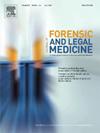基于烧痕特征的纵火案、焚尸案及尸后安置重构案例报告
IF 1.2
4区 医学
Q3 MEDICINE, LEGAL
引用次数: 0
摘要
火灾现场的法医鉴定面临三个核心挑战:区分死因(死前焚烧与死后焚烧),重建犯罪行为(纵火与意外),以及保存证据(热破坏与人为篡改)。本案例通过一起典型的故意杀人案和焚尸案,系统地论证了烧痕特征在纵火案侦查中的应用价值。基于人体焚烧行为特征的三维分析框架,构建了纵火案/尸体焚烧过程重构和尸体转移行为识别的系统路径。在纵火案重建中,将犯罪嫌疑人的衣物炭化梯度与身体烧伤分布形成空间映射关系,结合左手行为特征重建点火顺序(左手火源→左倾点火→出口路径重建);这种运动轨迹与烧伤形态分布模式完全吻合。在尸体迁移鉴定方面,包括尸体炭化区没有过渡带、遗骸与燃烧残余物地层反转、仰卧位臀部皮肤完整保存、枕毛保护性保存特征等关键证据共同构建了迁移的时空证据。本案例将烧伤形态学与人类行为学联系起来,为复杂火灾现场的犯罪过程重构建立了技术范式,为解决“焚尸灭证”案件提供了可复制的经验模型。本文章由计算机程序翻译,如有差异,请以英文原文为准。
A case report on the reconstruction of arson, corpse burning, and postmortem relocation based on burn trace characteristics
Forensic identification at fire scenes faces three core challenges: distinguishing cause of death (antemortem burning versus postmortem corpse burning), reconstructing criminal behavior (arson versus accident), and preserving evidence (thermal destruction versus artificial tampering). This case study systematically demonstrates the application value of burn trace characteristics in arson investigation through a typical intentional homicide and corpse burning case. Based on a three-dimensional analytical framework of human burn-behavioral characteristics, a systematic pathway incorporating reconstruction of arson/corpse burning processes and identification of body relocation behavior was established. For arson reconstruction, spatial mapping relationships formed between the suspect's clothing charring gradients and bodily burn distribution, enabling reconstruction of the ignition sequence (left-hand ignition source → left-leaning ignition → exit path reconstruction) through integration with left-handed behavioral traits; this kinematic trajectory exhibits complete behavioral-burn correspondence with burn morphological distribution patterns. Regarding body relocation identification, critical evidence including absence of transition zones in corpse charring areas, stratigraphic inversion between remains and combustion residues, intact preservation of buttock skin in supine position, and protective preservation characteristics of occipital hair collectively constructed spatiotemporal evidence of relocation. This case interlinks burn morphology and human behavioristics to establish a technical paradigm for reconstructing criminal processes in complex fire scenes, providing a replicable empirical model for solving “corpse burning-evidence destruction” cases.
求助全文
通过发布文献求助,成功后即可免费获取论文全文。
去求助
来源期刊

Journal of forensic and legal medicine
MEDICINE, LEGAL-
CiteScore
2.70
自引率
6.70%
发文量
106
审稿时长
57 days
期刊介绍:
The Journal of Forensic and Legal Medicine publishes topical articles on aspects of forensic and legal medicine. Specifically the Journal supports research that explores the medical principles of care and forensic assessment of individuals, whether adult or child, in contact with the judicial system. It is a fully peer-review hybrid journal with a broad international perspective.
The Journal accepts submissions of original research, review articles, and pertinent case studies, editorials, and commentaries in relevant areas of Forensic and Legal Medicine, Context of Practice, and Education and Training.
The Journal adheres to strict publication ethical guidelines, and actively supports a culture of inclusive and representative publication.
 求助内容:
求助内容: 应助结果提醒方式:
应助结果提醒方式:


